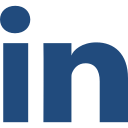LEARN ABOUT THE BENEFITS OF THE MICROLEARNING APPROACH TO CORPORATE TRAINING
Have you heard of Microlearning? The science behind this learning approach is not new. In 1885, a German psychologist, Hermann Ebbinghaus, published an experimental study on the forgetting curve when consolidating new information. According to Ebbinghaus' work, it's much wiser to take in smaller chunks of information between time intervals than to spend tedious hours digesting an entire course load. Why? Our brains need time to fix the new information in our long-term memory, and if we pound it with unbearable amounts of data, it will be overwhelmed! Therefore, let's take a look at the top five reasons why Microlearning works.
Get Our Attention
Let’s chat over a brew!
1. MICROLEARNING COURSES ARE ENGAGING
Traditional teaching approaches the learning experience with a long, heavy, and sometimes flat informative presentation: no multimedia support accompanying the thematic content. This only generates an aversion in learners towards engaging in learning activities. Instead, Microlearning is a proven methodology that brings in multiple multimedia platforms, such as video, audio clips, or even interactive scenarios, to encourage learners to master complex topics quickly using a light and enjoyable format.
2. MICROLEARNING HAS A PLACE IN THE WORKPLACE
With its compact presentation and to-the-point approach, Microlearning stands as a formidable tool for the workplace. Just as Google provides a quick learning alternative when employees encounter a complex problem at work, Microlearning is a fantastic way to learn specific topics in minimal amounts of time and is always available for revisiting. In addition, since the format facilitates quick access to specialized know-how, learners sit in on their lessons at their convenience. Moreover, students often choose to learn over web-based activities during quiet times, thanks to its engaging nature.
3. MICROLEARNING HELPS EMPLOYEES APPLY THEIR SKILLS ON THE JOB
Microlearning has a unique appeal for learning; it may present topics in small chunks, making them easily digestible, or take advantage of interactive and engaging learning methodologies. In either case, when Microlearning is available in the workplace, workers tend to maximize their productivity.
4. RECALLING ACQUIRED KNOWLEDGE IS EASIER
Remember we mentioned Ebbinghaus' work earlier in this article? Knowledge becomes available in our long-term memory when we learn with the Microlearning methodology. The brain creates neural pathways to store and access the most recent information, but it takes time to build the links. As a paced learning approach, Microlearning allows time for the brain to do its internal work by presenting content in separate, short instances that can be accessed repeatedly and whenever we choose.
Some Additional Info on Microlearning:
There is a wide range of learning methodologies, each of which offers different advantages for transferring knowledge. For example, comprehensive microlearning courses are helpful when the subjects covered must follow a storyline in the form of an introduction, a plot, and a development. But all topics contain issues and arguments that can be addressed in short episodes. This approach will allow you to present the content in distinct manners and contribute with their unique qualities.

Any company that needs to train its employees in specialized skills should take advantage of Microlearning. Microlearning is perfect for the rapid adoption of new concepts and becomes an invaluable asset when available to employees on their day-to-day assignments.
One last thing, reading this article probably didn't cost you more than four minutes, about the average length of a Microlearning segment.
 |
|||
|---|---|---|---|
4 Key Reasons Why Microlearning Works |
|||
LEARN ABOUT THE BENEFITS OF THE MICROLEARNING APPROACH TO CORPORATE TRAININGHave you heard of Microlearning? The science behind this learning approach is not new. In 1885, a German psychologist, Hermann Ebbinghaus, published an experimental study on the forgetting curve when consolidating new information. According to Ebbinghaus' work, it's much wiser to take in smaller chunks of information between time intervals than to spend tedious hours digesting an entire course load. Why? Our brains need time to fix the new information in our long-term memory, and if we pound it with unbearable amounts of data, it will be overwhelmed! Therefore, let's take a look at the top five reasons why Microlearning works. |
|||
|
|||
|
|||
|
|||
|
|||
Some Additional Info on Microlearning:There is a wide range of learning methodologies, each of which offers different advantages for transferring knowledge. For example, comprehensive microlearning courses are helpful when the subjects covered must follow a storyline in the form of an introduction, a plot, and a development. But all topics contain issues and arguments that can be addressed in short episodes. This approach will allow you to present the content in distinct manners and contribute with their unique qualities. 
|
|||
|
Any company that needs to train its employees in specialized skills should take advantage of Microlearning. Microlearning is perfect for the rapid adoption of new concepts and becomes an invaluable asset when available to employees on their day-to-day assignments. One last thing, reading this article probably didn't cost you more than four minutes, about the average length of a Microlearning segment. |
|||
| HQ - 2050 Route 27 | Suite 106 | North Brunswick | NJ 08902
ITTDigital LLC © 2022 |
More Insights
We'd love to hear from you!
















